Features of the layout of apartments of various sizes

Layout plays an important role in choosing an apartment. Its features will be a decisive factor when buying after the financial component and determining the area of the house.


What?
The totality of rooms, non-residential premises, sizes and shapes, their ratio and total area make up the plan of the apartment. The layouts of apartments are different: from typical layouts in multi-storey residential buildings to individual layouts of apartments in new buildings. The area varies - from small-sized apartments, measuring 5 by 5 m or 6 by 6 m, to large areas of 5-room apartments or open-plan housing in new buildings. The advantages of the latter are not obvious, but serious disadvantages are obvious.
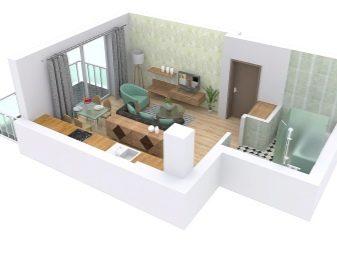
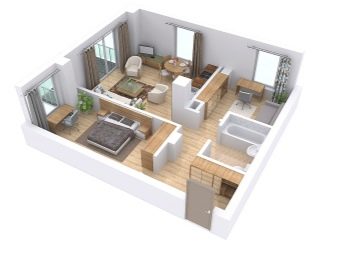


The Bureau of Technical Inventory - BTI, which celebrated its 90th anniversary in 2017, issues documents for state technical registration and inventory of real estate objects. An explication is attached to the floor plan of the house - an explanation of the architectural project with a list of quantitative and qualitative characteristics of the apartment.
The plan contains not only data on the number of rooms and footage, it reflects information about all its parts that exist in reality or only on a sketch - about load-bearing walls and partitions, about the location of bathrooms, kitchens, risers.


The certificate of ownership is issued on the basis of the BTI documentation on the condition and layout of the property. Having entered into legal rights to dispose of property, the owner acquires responsibilities for its maintenance. Therefore, before choosing an apartment, it is necessary to understand both the legal intricacies of the purchase and the layouts of apartments offered by the primary and secondary housing market.


Views
Features characteristic of a large number of apartments in multi-storey buildings are combined into a conditional group, which is considered to be a type of layout.
A typical layout is inherent in a series of houses built in a certain period of time, individual - a project made at the request of the customer in one copy, in the free one there are no partitions dividing the space of the apartment.
95% of the housing stock in Russia is made up of the types of layouts described below.


Standard and uncommon apartment layouts in old houses appeared in the 20th century:
- "Stalinka" - high ceilings of spacious apartments in buildings with 2-4 floors without an elevator, a combined bathroom, often wooden floors that can be worn out. The solid age of the houses built in the 40s and 60s does not affect the high cost of apartments in them, which are located in quiet, cozy courtyards or in historical districts;



- "Khrushchev" - apartments of a modest footage in five-storey buildings without an elevator with a small kitchen and often a combined bathroom, with walk-through and isolated (in brick houses) rooms and most of the load-bearing walls (in panel houses). Despite the depreciation of the fund (houses over 50 years old), apartments are popular due to their low cost;
- Have "Brezhnevki" the layout is more convenient than that of "Khrushchev", more area and kitchens, higher ceilings and thicker interior walls.

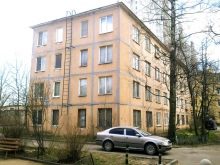

Stalinist houses are distinguished by high ceilings in apartments, spacious rooms. Pre-war - with unique architecture, often in the Empire style, post-war ones are made of less expensive building materials, but the apartments in them also have a large area.To solve the housing problem in a war-torn country, people were settled in "Stalin's" - a family for a room.
The layouts of Stalinist houses of both periods are the best among those described, the number of rooms is usually 1-2-3-4, there are rarely five-room apartments.



Layouts of the 60-90s of the twentieth century:
- Improved - took into account the shortcomings of the old layouts, is distinguished by an increased total footage, a separate bathroom, isolation of the rooms. Houses above 5 floors have an elevator and a garbage chute. Different materials were used - brick houses were also built from reinforced concrete. In improved "brezhnevki" kitchens from 8 m, in multi-room apartments - from 12 m;
- New - improved the first Soviet layouts, developed from the mid-70s to the end of the twentieth century. The apartments have acquired an even larger kitchen area, a separate bathroom. The configuration, number of storeys, and the principles of building houses have changed.



The end of the 90s is characterized by the emergence of new houses - brick, panel and monolithic, the market is filled with luxury housing. New technologies make individual layouts possible.
Since the mid-2000s of the XXI century, the free layout of the apartment has received the right to life. Its main feature is the savings for the developer due to the absence of the need to erect curtain walls. We mentioned this at the beginning of the article, now we will explain in detail what a free layout is.


Frame-monolithic houses are built with the expectation that there are no curtain walls inside the apartments. This makes the project less costly for a developer who advertises a "free" layout, for the consequences of which only the misleading buyer is responsible.


Sellers represent this layout as an absolute blessing, as if the owner can dispose of the space as he pleases: put the walls anywhere, move the risers, make three instead of one bathroom, move the kitchen wherever he pleases, and increase the bathroom three times at the expense of neighboring rooms.
By saying that a person can plan an empty space at their own discretion and immediately begin to translate their fantasies into reality, home sellers deceive the buyer.


In fact, everything happens like this: you buy an apartment of one square meter, and by erecting the walls you get a property of a smaller area. That is, you can sell it as an apartment with a footage cut by you for your own funds. The first deception is that the apartment should have been cheaper due to the lack of decoration and walls that reduce the floor space when it is being built.


The BTI has a plan with the definition of residential non-residential areas and the location of the walls. Describing the merits of free planning, you will not be told about it. After all, then you will learn about the need to change the existing layout - about redevelopment, which you definitely did not count on, acquiring bare walls and the dream of creative freedom. That is, at that moment you will understand that you need to collect the necessary documents and coordinate the project, that all this will take a decent amount of time. Therefore, developers will remain silent like guerrillas, so as not to destroy your beautiful illusions - this will be their second deception.


The risers, bathroom and kitchen will be where they were originally architecturally planned. The area of the bathroom cannot be increased at the expense of living rooms, only at the expense of the corridor, if possible. The number of bathrooms is laid down immediately and depends on the risers: there are two - there will be two, no two - there will be one bathroom. The transfer of heating radiators is forbidden, the load-bearing walls cannot be demolished, because of which you will not make the loggia part of the room, but you can remove its windows and doors by combining the space in this way, but not otherwise, and standards have also been set for the minimum dimensions of living rooms. The developer will keep silent here too, cheating for the third time.

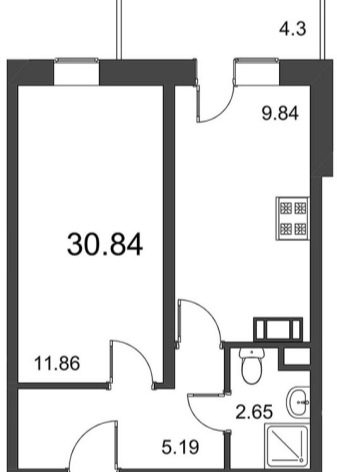
The only benefit of such a layout is that there is no need to dismantle the walls.
When you start repairing and it turns out that your planning ideas do not correspond to the plan approved for operation, you will need to agree on the redevelopment in the BTI.That is, the repair will be postponed, it is impossible to start it without approval. It will take time to get a new plan (from several months), repairs - from 3 months. Throughout this period, you will need to live somewhere, perhaps the only option would be to rent a home - new spending. These will be troubles # 4 as a result of direct deception or non-agreement of the seller.


Prior to the start of the construction of the house, a layout was developed and approved for each apartment. And if you do not agree on a new layout and make repairs without approval, there will be difficulties with the sale of the apartment in the future.
It turns out that only people who are not limited in the budget can afford an apartment without walls. Redevelopment is costly; repairs according to an approved individual layout can take up to 50% of the purchase price of an apartment.
The real estate market is diverse, you can find a suitable layout or change the project approved by the builder to a minimum, complete the renovation, and then agree on minor changes in the plan - which is easier than agreeing on large-scale ones.


The "European" layout is one of the most rational on the market today. It differs in that it intelligently divides zones into a small area of the apartment, providing comfort and savings due to a reduction in footage, for which it is appreciated by young families. The living room in such an apartment is shared with the kitchen; there are separate one or two bedrooms.
These are the 1-2-room transforming apartments, which are transformed, respectively, into 2-3-room apartments with the help of a partition placed between the two large windows of the living room.


If you are not without a creative streak and are demanding in your choice, you can try your hand at self-design.
Sketch a drawing by hand or use various computer programs designed to design houses and apartments:
- Professional - 3D Studio MAX, ArchiCAD, AutoCAD;
- Free - FloorPlan 3D, House-3D and Sweet Home 3D.


With them, you will make your dreams of the perfect interior and the best layout of the apartment come true. For example, you can make a "circular" apartment out of an open-plan apartment, when all the rooms smoothly flow into one another in a circle. From the kitchen you can get into the living room or study, from there - into the bedroom, from the adult bedroom - into the nursery, from the nursery - into the kitchen, and in the middle there can be a bathroom, into which doors from 2-3 rooms lead and close from the inside if necessary.

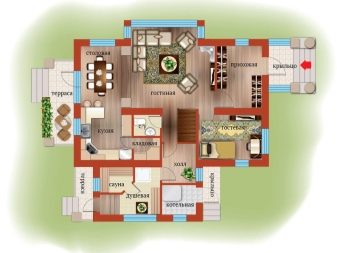
Types
The main types of apartment buildings in Russia, as it was said, are "stalinkas", "Khrushchevs", "brezhnevkas" and their modernized versions. The latter, according to the name, appeared later than the first two and were built in the 70-80s, they already had an elevator and, in general, they are more comfortable than the "Stalin" and "Khrushchevs".
These types of layouts refer to typical buildings, like houses of different series, which were built in the USSR according to standard projects from bricks, reinforced concrete slabs. Panel construction swept our country in the 60-90s of the XX century and solved the issue of providing citizens with individual housing (or at least communal housing - in houses with apartments in a shared kitchen), raised by the Soviet government in the post-war period.



9-storey panel houses (as well as 5-10-storey ones) grew like mushrooms after rain, the technology of erecting houses-constructors made it possible to do this in the shortest possible time. Their large gaps were "sung" in their monologues by satirists Raikin and Zadornov. But panel houses are still in operation and are still being bought in them, although these houses were supposed to serve, according to the idea of the Soviet authorities, mainly until 2000.


Example: 9-storey houses of the P-57 series had three-layer panel walls 32 cm thick, straight and triangular balconies, 1-2-3-room apartments with a total area of 32.6 to 63.2 sq. m and a kitchen up to 7 m2, gypsum concrete partitions. They were built from 1963-1970; the houses of the series had 12 floors each.The pluses include a separate bathroom (now people prefer to combine) and a small number of load-bearing walls - the possibility of redevelopment. By cons - the footage of the kitchen.


Five-story buildings made of reinforced concrete slabs are a small footage, a combined bathroom, a mini-kitchen, no elevator, walk-through rooms in a lorry or two-room apartments. There were also improved layouts in 5-9-10-storey panel houses with apartments from 1 to 4 rooms.
About 100 series of typical houses in the Soviet Union were produced.
Starting with panel houses, we came to the topic of determining the types of layouts:
- "Little Family" - a small one-room apartment with a combined bathroom;
- A hotel-type apartment is tiny in size as a whole and in individual parts;
- "Studio" and "partial studio" - options for a free-form layout - without walls and with one dividing wall, respectively, in terms of footage a little more than the first options.
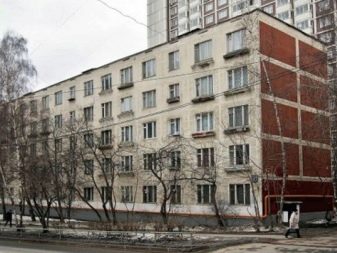

Studio apartments 30-33 sq. m or 40-50 sq. m come with one and two windows, the L-shaped layout of a smaller studio is considered unsuccessful due to the fact that the kitchen arranged in the corner does not have natural light. In a studio with one window, you have to divide it between the kitchen and the bedroom. When there are two windows - one is smaller, the other is larger, they are on opposite sides, and the room - a square or rectangle, is divided in half by a partition, forming 2 parts of the apartment - a private and a common space, making the kitchen-living room from the kitchen side.

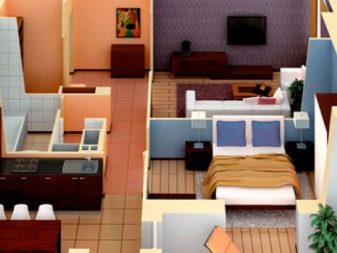
It should be noted that the apartments are divided into 2 types - with isolated and adjoining rooms. The first type is preferable, since separate rooms provide an opportunity for privacy and relaxation. It also has a larger kitchen.
Adjacent rooms, one of which is a walk-through, is an unfortunate layout, and nothing compensates for its main drawback - the lack of personal space.


Common types of layouts:
- "Leningradka", or "Lenproekt" - apartments in panel or block houses of 70-80 years, long, in one line, multi-entrance and multi-storey. Apartments in them with windows on one side (except for corner ones) with a large bathroom, stretch along a wide corridor on one side of the house, and thanks to the load-bearing walls between the apartments there is good noise insulation;
- "Vest", or "butterfly" - a type of layout in which rooms in a two-room apartment are opposite each other, on opposite sides of the house, like their windows. The bottom of the "shirt" is usually the entrance, and at the end of the "sleeves" there are window openings;

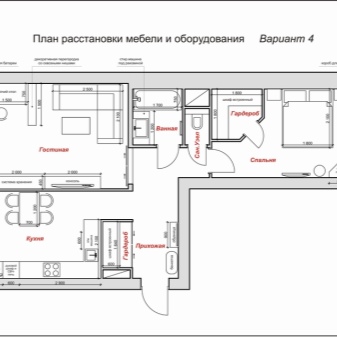
- "Czech", or "Czech project" - typical layouts of several series. Houses of 70-90 years of construction are 9-storey panel, concrete, rarely brick, "dotted" with balconies, with an elevator. This implies several balconies near one 3-4-room apartment. Small kitchen - 6-7 m, ceilings from 2.5 m in height, separate bathroom, rooms are mostly isolated;
- 2-3-room apartments in the old series are of the "linear" type, like "Leningrad" or "Tashkent", when all the windows are located on one side of the house. Usually "linear" 3-room in old panel houses are improved "Khrushchevs", but sometimes they are found in modern houses.



The real estate market offers both non-standard solutions in elite houses with one- and two-level apartments, and unusual layouts in economy class houses. The most common innovation is panoramic glazing, which gives a lot of light to the apartment.
Apartments with two levels are presented in 2 versions - ready-made and with a high ceiling for self-construction of the second floor.
Mansards and apartments with access to the roof are still rare, but in demand.



Projects with dimensions
At the beginning of the article, it was said about important documents for an apartment in the BTI. Redevelopments should be done with approval, and better before than after, so that there are no unpleasant surprises. After all, even moving a shell a few centimeters may be illegal.It is also necessary to familiarize yourself with the project documentation before buying an apartment, so as not to be responsible for the unauthorized redevelopment of the previous owners. In the documents, you will find symbols in the layout of the apartment that you are purchasing or want to renovate.
Possible designations:
- at the entrance number of the apartment;
- gas and electric stoves;
- toilets, bidets;
- garbage chute;
- ventilation;
- sinks;
- light openings.


The explication will reflect the size and purpose of the premises, in the floor documentation - the layout of the apartment - the plan from above, in the data sheet - the series, number of storeys, the structure of the floors of the house. Carefully study all the premises of the apartment, large, small, residential and utility rooms. Small-sized and two-level apartments are good in their own way, each has its own important features, like every house - a two-story, five-story, nine-story or high tower-type building.


There are no trifles when it comes to studying the design documentation - the number of storeys, floors, age of the house, technologies and materials used, the shape of the roof, ventilation system, fire escape, the presence of redevelopments in the history of the apartment - everything is significant. But the size of the apartment, the number of rooms and the amount spent on housing do not compensate for this knowledge and will not provide comfort in the new living space by themselves.
Problems are not solved by buying expensive real estate alone. A person who buys a small room for living will be more prosperous than someone who will formally approach the issue of choice.


Really safe and high-quality housing for operation will be found by the buyer who finds out all the legal nuances and quality and technical characteristics of the future house and apartment, without overpaying for unnecessary options.
Here you can see specific layouts of large and small apartments.


Computer project of the European layout, top view.


Classic contiguous layout.


Five-room, 7-room apartments in our country are still rare due to low demand.
The footage depends on the type of layout. For "small families", "guest rooms" and studios it is 18-20, 28, 34-35, 36-37, 38, 40 square meters. 2-room "Czech", "Leningrad" - from 44-45 to 47-50 sq. m, they are also 4-room, have an area of 78 to 89 sq. m, and 90-meter "Czech women" also have 3 balconies with a kitchen area of 8-10 m! For 3-room apartments, the area is from 60-70 sq. m.
In the houses of the 111-97 series built in 1970-90, the area of 2-room "small families" in nine-story buildings is as much as 42 square meters. m, ordinary 2-room apartments - up to 54 sq. m, and 3-5-room apartments of 97 series houses were from 100 sq. m - 103-145 m2.


Isolated rooms, L-shaped layout:


Scheme of the European layout of an apartment with an area of 38.5 sq. m .:


Furniture options
Check out the beautiful interior design options.
1-room apartment 28 m2. Arrangement of furniture in a room is a functional and comfortable option:


Living room in an apartment with a European layout with a red sofa and the same bright red accents in the interior:


2-room apartment 65 m2 in "stalinka" with walk-through rooms - from the living room to the bedroom, blue and white tones:


Bedroom in the same apartment:


Cozy bright entrance hall in it:


An apartment with interesting innovative ideas in terms of design and layout of premises:



The bathroom of this apartment, separated from the bedroom by a partition:

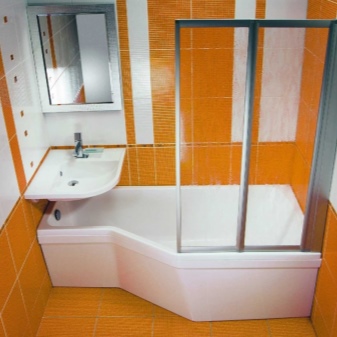
How to choose?
When choosing the layout of an apartment, you need to consider the following points:
- To protect yourself and make redevelopment in an old or new house, familiarize yourself with the BTI plan: make sure there are no uncoordinated redevelopments, find out where the load-bearing walls are, and which ones can be dismantled;
- It is better to choose an apartment that is not adjacent to the elevator shaft, and also has at least one room without walls common with neighbors;
- The corner and the ground floor apartment can be damp and cold in any home;
- The cardinal points are important - in the north it is cold and dark, in the south it is too sunny and stuffy in summer. East and west are preferable. The same is with the balcony, loggia;


- The walls bordering the neighbors should be load-bearing, then the noise of the neighbors will not bother you;
- The footage and layout depend on the composition of the family - regardless of anything, everyone should have their own space;
- Studios should be chosen with the ability to close the private area with a partition;
- The higher the ceilings, the more spacious and more air, but ventilation should work well - make sure of this;
- There are pros and cons in new-build apartments. Pros - high ceilings, comfortable elevators, well thought-out layouts, zero deterioration of the fund. Cons - no repairs, the need for redevelopment, simultaneous repairs with a neighbor, the inability to move in immediately;


- Choosing an unsafe area - with bad neighbors, undeveloped infrastructure, proximity to the industrial zone and power lines, retail outlets and cafes under the windows, a busy highway - there is no question of comfort. But parks and green spaces nearby will be an advantage;
- An apartment without load-bearing walls can be re-planned by agreeing on a new plan in the BTI, turning a 1-room apartment into a studio, or a studio into a 1-2-room apartment;
- The wall between the separate bathroom and toilet can be removed by combining them for a larger area;
- A closed layout should not be with walk-through rooms;
- It is important to have space for a pantry or the pantry itself as a room;
- Living rooms without natural light should not be;


- Large footage in Russia will be expensive due to heating;
- Non-standard rooms are original, but not suitable for everyone, unlike traditional shapes - a square and a rectangle;
- Extra and dimensional corridors - irrational use of space;
- With a gable roof, the last floor is not terrible, even an advantage appears - the absence of neighbors from above.
There are 3 main types of layouts - open, closed and partially closed. Each has its own merits for a specific category of buyers.



A closed classic with isolated rooms will delight a large family, for whose members privacy and the ability not to interfere with each other is important. These layouts with variations are found in older and more comfortable new homes. Usually the kitchen is adjacent to the bathroom, there are no uniform rules for the relationship between rooms, it all depends on the type of layout and the number of rooms. Sometimes a corridor takes up a lot of space. But representatives of different generations and family members with different sleep schedules will be comfortable in such an apartment, the layout of which assumes traditional interior solutions.


A completely open plan is chosen in two cases - if funds are limited or if funds are enough for expensive solutions. Often young families choose studio apartments with a small footage - up to 40 m, and turn them into full-fledged 1-2-room apartments, which are quite suitable for a family of 2-3 people.
A small area is zoned visually and functionally, using, in the first case, lighting and colors in furniture and decoration, highlighting zones, changing floor levels. And in the second case, choosing transformable furniture, which in different situations has a different purpose.


The sizes of free layouts for people with an unlimited budget depend only on their wishes and imagination - in this case, the idea of a completely open space can be realized.
There is also a compromise option - a partially closed layout. Personal space is closed from strangers, and the kitchen, living room and dining room are combined. This can be realized both in a small apartment and in an unlimited area, on the first floor of a two-level apartment, for example.
And it is better to make partitions in this case not deaf, but decorative, dividing the space and not eating it up.


Often there is such a variant of the last layout - the kitchen, dining room and living room are on the same line, which makes it possible to see all family members and guests at once, and the smells coming from the kitchen are drawn out by ventilation, hidden behind sliding partitions if a surprise is being prepared or they are inappropriate.
If you take into account all these selection conditions, then you will avoid serious mistakes and find a layout that suits you.



How to plan?
A large apartment will not be good from the point of view of comfort, if its space is filled incorrectly, then it is empty due to a lack of furniture, then there is an excess of things in it and its main advantage is lost - space.In a cramped apartment with bulky furniture and low ceilings, people experience stress due to the lack of living space and space.
There is only one way out in such cases - redevelopment or a less costly option - replacement of furniture and new decoration. Modular, built-in, transformable furniture for small apartments, the principle of visual illusions in interior design, the use of screens, partitions and sliding doors will help here.
The result of the new layout is the solution to the problem of a reasonable distribution of the area.



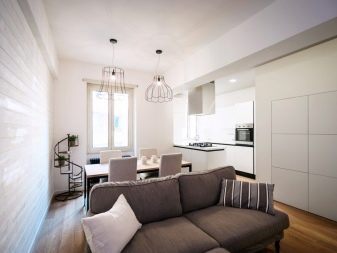
The rules for small apartments are as follows:
- Make custom-made furniture according to the exact individual measurements of the premises, as it is more difficult to find a suitable ready-made one. It will not be possible to pick it up with an accuracy of a centimeter, unlike a built-in one made to order. Then the kitchen-living room in the studio will become an ideal room for rest and work;
- Choose light shades of furniture and finishes, avoid dark ones, as they reduce the space. Useful reflective surfaces, diagonal flooring, high furniture for low ceilings. Pastel colors will give lightness and spaciousness. The low ceiling should be lighter than the walls in order to appear taller;



- Choose local lighting, consisting of different sources, which is convenient and expands the space using lighting zoning. Mirrors will also visually increase the area and play the role of additional lighting;
- Vivid colors may be present, but in details - paintings, accessories;
- The storage problem is solved by arranging a podium with a horizontal pantry from drawers, placing it under a bed or table in the kitchen. The wardrobe is moved to one place along the free wall, getting rid of the overall closet. The system of shelving with it is closed with a screen - mobile or fabric;


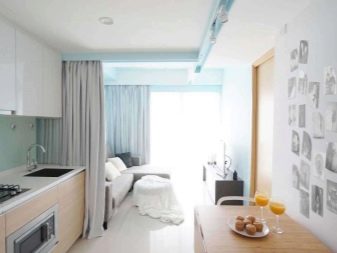

- They do not demolish all the partitions so as not to lose their private areas - this applies to any footage;
- Sliding doors and partitions are needed in fully or partially closed layouts, as they save space.
The free layout of a large-area apartment can and should be functional. It is necessary to observe the principle of zoning personal and common space.
There are no restrictions in colors other than taste, as well as in the choice of styles.



The best convenient solutions
The ideal layout implies the convenience of zoning, the correct proportions of premises and ergonomics, the presence of the necessary rooms - living and utility rooms, their optimal areas, a suitable interior.
Proportions are important for psychological perception - there is a principle of proportionality of the total footage to the number of rooms. If the area of the apartment is 90 m, it should be 3-room. The ratio of the height of the ceilings and the area of the apartment should also be correct: the comfortable height of the ceilings starts from 2.7 m with an open area up to 25-30 m, or 2.5 m for an area up to 20 m.


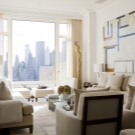



It is better to re-plan narrow rooms, but do not leave open spaces without partitions, they will also overwhelm. The ideal layout is free from irrational use, unnecessary corridors. She must have an entrance to any room from the hallway or hall.
The most comfortable apartments can be of almost any layout, the main thing is that it matches your ideas about the convenience and rationality of using space.




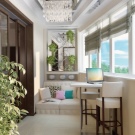

An example of a cozy apartment of a small area, top view.



Usually studios are rectangular in shape, but there are also L-shaped or corner layouts. Initially, they cannot be called convenient because of the footage and the location of the kitchen in the corner without a window, but if you properly equip the space, put a sliding glass partition in front of the kitchen, improve the ventilation system, you can achieve greater planning convenience.
The original solution would be a "circular" layout - redevelopment and its transformation into a 2-room apartment with an area of 35-40 m.


Unsuccessful decisions imply violation of the principles of good planning.
Examples of violations of the principles of harmonious distribution of space:
- Incorrect proportions - the area of the apartment is not proportional to the number of rooms;
- Lack of total footage and storage space;
- There is no balcony or loggia, a private area, natural light in the living rooms and in the kitchen;
- Exit windows only to the north or south;
- Inconsistency between the size and shape of the furniture and the size of the room.


Features of the wrong layout:
- Bedroom or other living room without windows;
- One bathroom in an apartment with more than 3 rooms;
- The absence of a so-called "dark" room for at least one for 2-3 living quarters is a problem with the storage of things;
- A poor ventilation system negates any advantageous layout;
- A duplex apartment with no lift for the elderly is a bad option;
- People associate rooms of non-standard shapes with difficulties in planning and inconvenience of operation;
- One exit to the loggia is inconvenient.



Interesting ideas
Designers and our own imagination give us ideas for the layout of the apartment and interior decoration in the loft style, cozy classics, Scandinavian, delicate provence, hi-tech, who love everything ultramodern. New buildings make it possible to use the area untouched by design as a blank sheet, to feel like the creator of the space at home!






Living room in a Scandinavian style - cleanliness, order, functionality, light walls, natural materials and living plants. In this case, the layout helps to solve both aesthetic and convenience issues - light large windows provide light and air, and the color of the interior supports and enhances this. Even window sills are used as work surfaces, the stove works, it is beautiful and warms in winter, thanks to the design the room seems larger. The furniture is conveniently arranged:
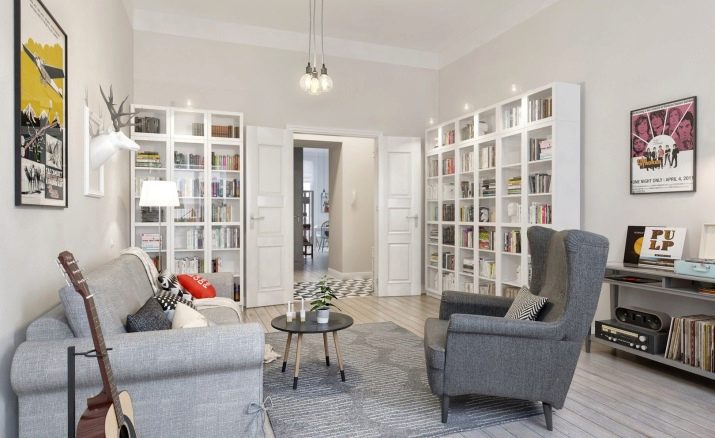

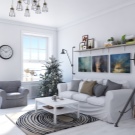


The loft-style kitchen-living room accommodates a desk. An old worn carpet, a mustard-colored leather table and a stylish red armchair add chic and coziness. The spaciousness is increased by the glossy floor and the white color of the surfaces, but a large room does not press with emptiness, because it is filled with convenient and practical things of a suitable size:
Get inspired by these ideas, look for new ones!





How to choose an apartment in a new building, see the next video.













The comment was sent successfully.